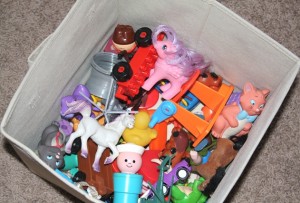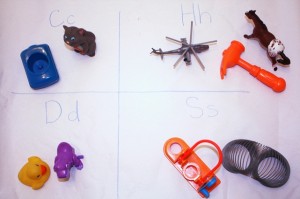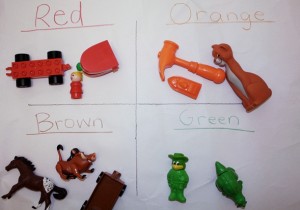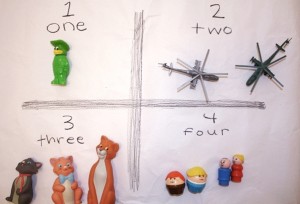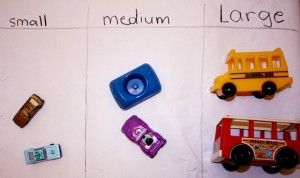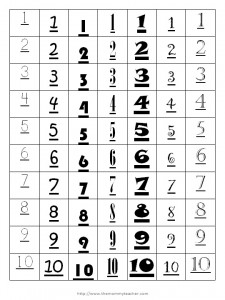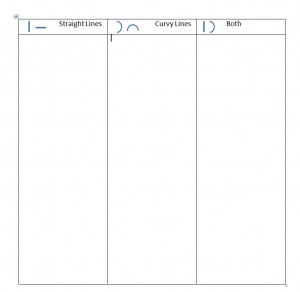Little ones have the BEST imaginations; yet, some things that we define as make-believe may seem like a real possibility in a child’s creative little mind.
Still, it is important to start having “real” versus “make-believe” conversations with our little ones…..PLEASE don’t take this post out of context and start breaking their hearts about different heroes they may have that may or may not exist 😉
I am talking about asking questions about books and stories like “Goldilocks and the Three Bears”….
Asking questions like: “Could that really happen in real life? Can animals talk? Do bears live in cabins in the forest and act like people?” Etc.
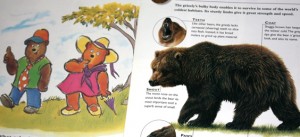 IF your little one says “yes” say “hmmmm….I wonder if we could observe bears in the real habitat/home they live in to see how they really are.” Go to youtube.com and search for different real-life bear videos to show your little ones the reality THEN ask questions like: “What are some things that are the same? What are some things that are different?”
IF your little one says “yes” say “hmmmm….I wonder if we could observe bears in the real habitat/home they live in to see how they really are.” Go to youtube.com and search for different real-life bear videos to show your little ones the reality THEN ask questions like: “What are some things that are the same? What are some things that are different?”
A great way to make a measurable chart contrasting real and make-believe is to
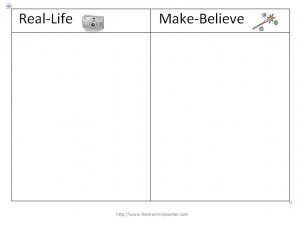 1) Print the freebie I made for you: Real vs make-believe printable (You could also make/use a venn diagram)
1) Print the freebie I made for you: Real vs make-believe printable (You could also make/use a venn diagram)
2) Cut out pictures from magazines and place them in the column under the category it falls into.
3) Talk about it….ask questions to get your little one to figure it out logically!
This teaches your little one critical thinking skills, introduces the concept of fiction vs. nonfiction, and allows your little one the opportunity to build on oral vocabulary and express their ideas about their observations.

